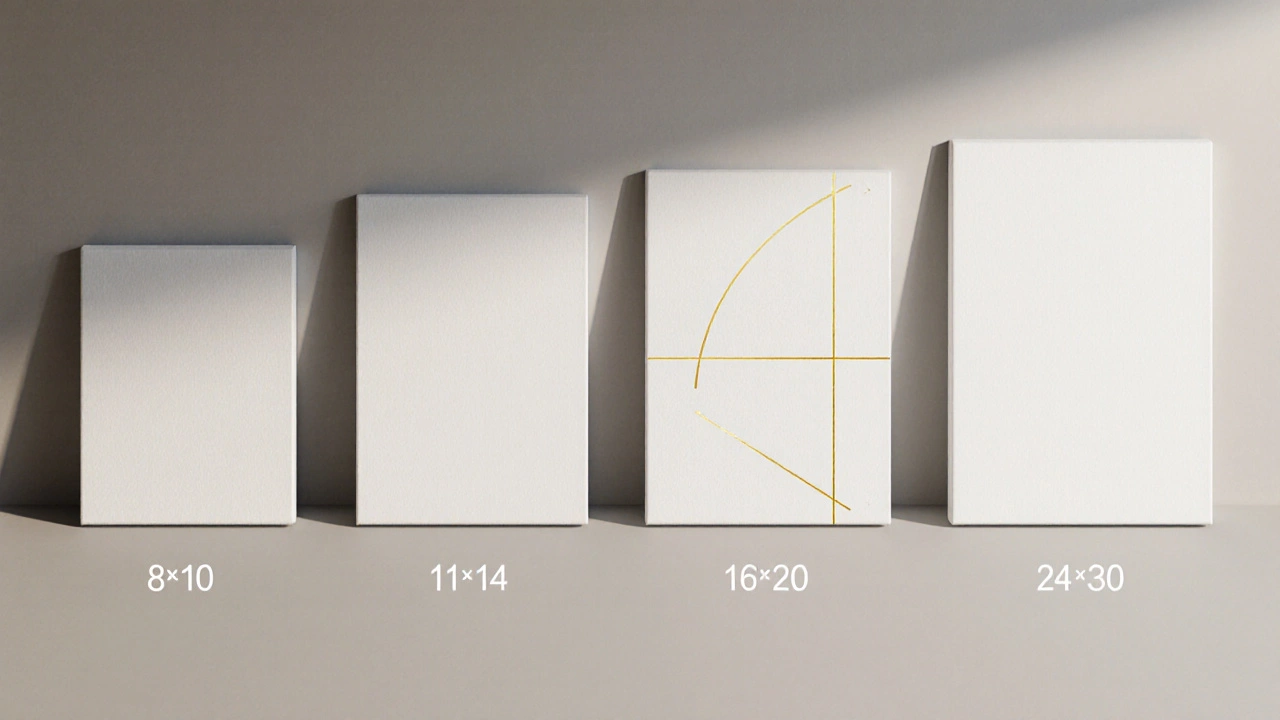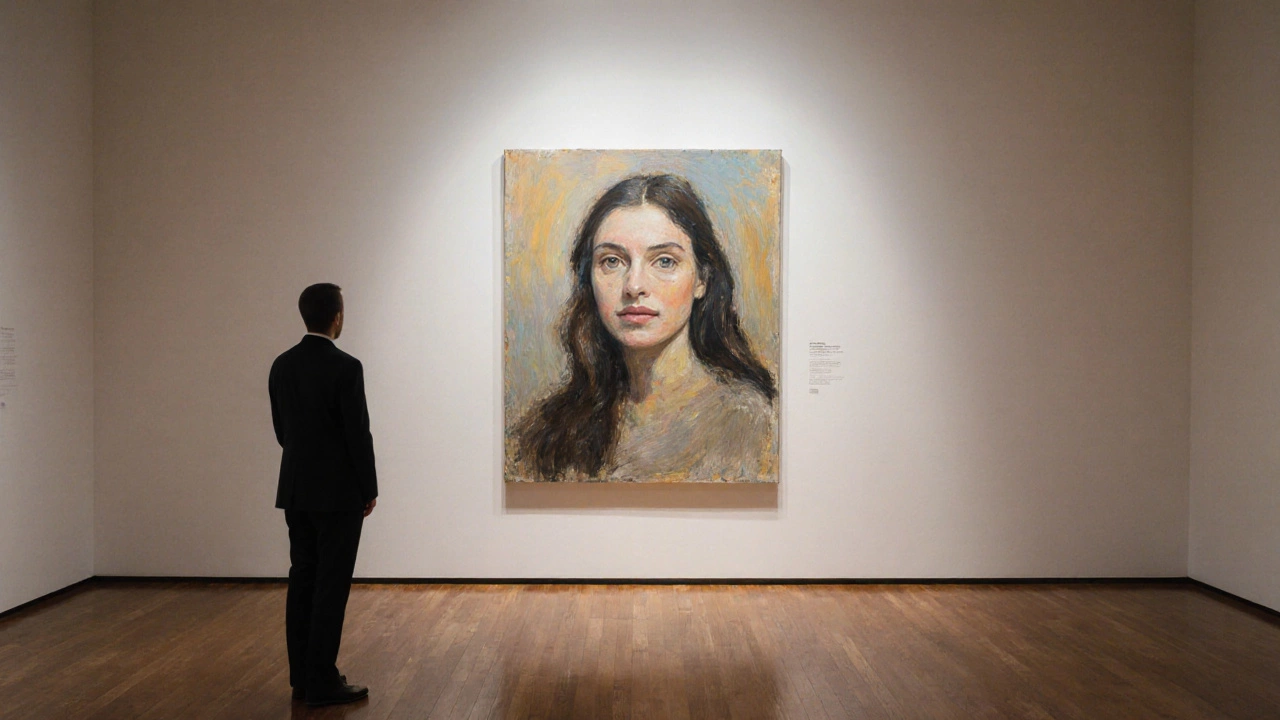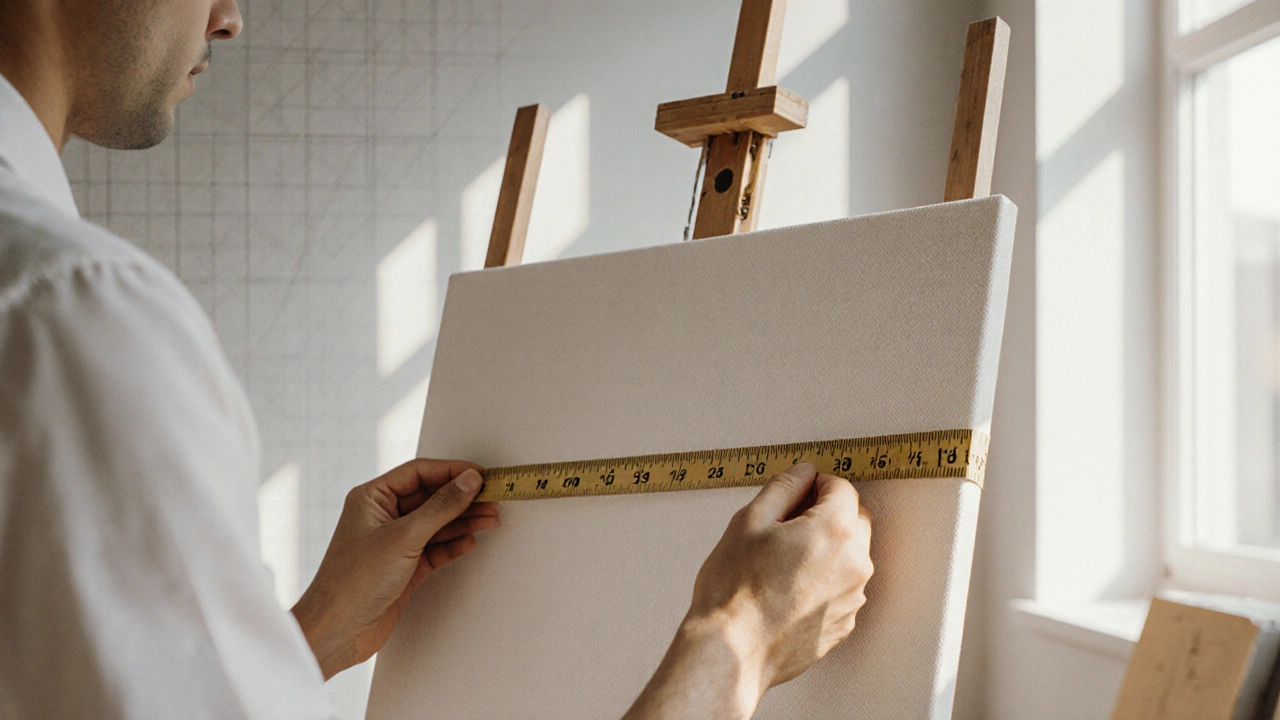Portrait Size Calculator
Determine the ideal portrait painting size based on your room dimensions and viewing distance. Follow professional artist guidelines from the article.
Based on your room dimensions, viewing distance, and aspect ratio selection.
- 8×10: Head shot or study
- 11×14: Half-body portrait
- 16×20: Full-body portrait
- 24×30: Statement piece
- 20×20: Square format
When you stare at a blank canvas, the first question that pops up is often “how big should my portrait be?” The answer isn’t a one‑size‑fits‑all number; it’s a mix of visual balance, room context, and how the viewer will experience the work.
What "Portrait Painting Size" Actually Means
Portrait painting size is the overall dimensions of a portrait artwork, typically expressed as width × height in inches or centimeters. It determines how a figure fills the frame, how much surrounding space you leave, and how the piece interacts with its environment.
Why Size Matters More Than You Think
Think about walking into a gallery. A life‑size portrait grabs you instantly; a miniature one invites you to lean in and discover details. Size influences:
- Viewing distance - the closer the viewer, the smaller the canvas can be without losing impact.
- Room scale - a large painting can dominate a tiny hallway, while a modest piece can get lost in a spacious living room.
- Aspect ratio - the relationship between width and height guides composition and figure placement.
Traditional Portrait Dimensions: The Classics
Artists have relied on a handful of tried‑and‑true sizes for centuries. Common standards include:
| Standard Size (inches) | Recommended Use | Why It Works |
|---|---|---|
| 8 × 10 | Head‑shot or study | Easy to frame, perfect for close‑up details |
| 11 × 14 | Half‑body portrait | Balances figure and background without overwhelming |
| 16 × 20 | Full‑body portrait | Provides breathing room for stance and setting |
| 24 × 30 | Statement piece | Commanding presence for gallery walls |
These sizes align with the historic Golden ratio (approximately 1:1.618) or simple whole‑number ratios that feel naturally balanced to the eye.

Modern Portrait Formats: Breaking the Rules
Contemporary artists often experiment beyond the classics. If you love a cinematic feel, try a wide 2:3 aspect ratio (e.g., 18 × 27 inches). For a bold, square look, a 1:1 ratio (e.g., 20 × 20 inches) can make the figure feel centered and powerful. The key is to maintain a proportional relationship that guides the eye without feeling cramped.
How to Pick the Right Size for Your Project
- Define the viewing context. Will the portrait hang above a sofa, in a hallway, or on an exhibition wall? Measure the wall space, leave about 2‑3 inches of breathing room on each side.
- Consider the subject’s scale. A portrait of a child or a close‑up face may feel intimate at 8 × 10 inches, while a full‑body depiction of an adult benefits from at least 16 × 20 inches.
- Check the aspect ratio. Use the Proportional guidelines of 3:2, 4:5, or the Golden ratio. If your subject’s pose is vertical, a taller canvas (e.g., 14 × 22 inches) preserves proportion.
- Factor in viewing distance. For a piece viewed from a few feet away (gallery setting), larger dimensions enhance impact. For close‑up viewing (studio desk), smaller sizes allow detail appreciation.
- Test on paper. Sketch the outline of your chosen size on a piece of tracing paper and tape it to the intended wall. Walk around-does it feel right?
Following these steps helps you avoid the common pitfall of “too big for the room” or “too small to notice.”
Common Pitfalls & Pro Tips
- Pitfall: Ignoring the frame size. frames add 2‑4 inches on each side; always add that to your canvas dimensions.
- Pro tip: Use a Canvas with a slight stretch (1‑2% larger than the painted area) to avoid edge distortions.
- Pitfall: Choosing a size based solely on cost. Higher‑priced canvases aren’t automatically better; focus on visual harmony first.
- Pro tip: When in doubt, go one size up. You can always trim the canvas later, but you can’t add area without re‑painting.

Quick Reference Cheat Sheet
- Headshot: 8 × 10 in - ideal for close study, fits most small walls.
- Half‑body: 11 × 14 in - offers enough background without overwhelming.
- Full‑body: 16 × 20 in - standard for portrait commissions.
- Statement piece: 24 × 30 in or larger - works best in spacious galleries.
- Square format: 20 × 20 in - modern, bold, good for stylized portraits.
Frequently Asked Questions
What is the most common portrait painting size for beginners?
An 11 × 14 inch canvas strikes a balance between manageable surface area and enough room for detail, making it a favorite starter size.
How does viewing distance affect the ideal canvas size?
The farther away a viewer will stand, the larger the canvas should be. A rule of thumb is to make the height roughly one‑third of the expected viewing distance.
Can I stretch a smaller canvas to a larger size later?
Stretching a finished painting is risky; it can cause cracking. It’s safer to plan the final size before you start, or leave extra canvas around the edges for future expansion.
Do standard canvas sizes differ internationally?
Yes. Europe often uses the “Figurine” system (e.g., 30 × 40 cm), while the U.S. favors inches. Convert using 2.54 cm per inch and adjust for local framing conventions.
Is a square canvas ever appropriate for a portrait?
Absolutely. A square format can emphasize symmetry and give a modern feel, especially for stylized or abstracted portraits.
Next Steps: Bringing Your Size Choice to Life
Now that you have a clear framework, grab a measuring tape, sketch a few size options on graph paper, and picture each version on your wall. If you’re working on a commission, share the dimensions with your client and ask for feedback early to avoid costly adjustments later.
Remember, the portrait painting size you pick sets the stage for the entire creative process. Choose wisely, test visually, and let the size amplify the story you want to tell.

